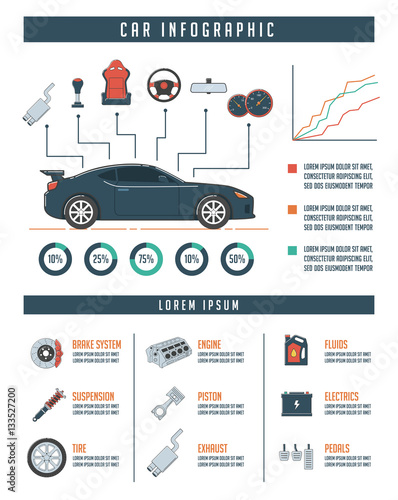Exploring The Genuine Analysis Of Your Cars And Truck'S Warning Lighting
Exploring The Genuine Analysis Of Your Cars And Truck'S Warning Lighting
Blog Article
Short Article By-Kane Gross
When you're behind the wheel, those beautiful caution lights on your control panel can be a little bit difficult. Do you know what they're attempting to inform you regarding your auto's wellness? Recognizing the value of these lights is vital for your safety and security and the durability of your automobile. So, the following time one of those lights pops up, wouldn't you wish to decipher its message accurately and take the needed steps to resolve it?
Common Warning Lights and Interpretations
Identify common warning lights in your car and recognize their meanings to ensure secure driving.
One of the most normal caution lights consist of the check engine light, which signifies concerns with the engine or exhausts system. If this light comes on, it's crucial to have your lorry checked promptly.
The oil stress advising light suggests reduced oil stress, calling for immediate interest to avoid engine damage.
A blinking battery light may suggest a damaged charging system, potentially leaving you stranded otherwise attended to.
aaa auto repair monitoring system (TPMS) light alerts you to low tire pressure, affecting car security and fuel effectiveness. Neglecting this can result in unsafe driving conditions.
The ABS light suggests a trouble with the anti-lock stopping system, endangering your ability to stop quickly in emergencies.
Last but not least, the coolant temperature level advising light warns of engine getting too hot, which can lead to serious damages if not dealt with promptly.
Understanding these typical caution lights will certainly assist you resolve issues without delay and maintain safe driving problems.
Relevance of Prompt Interest
Understanding the typical caution lights in your car is only the first step; the relevance of without delay attending to these warnings can't be emphasized sufficient to guarantee your safety and security when traveling.
When a warning light illuminates on your dashboard, it's your car's method of communicating a possible issue that needs interest. Neglecting auto repair insurance can bring about a lot more serious troubles later on, jeopardizing your safety and security and potentially costing you a lot more out of commission.
Prompt interest to warning lights can stop failures and accidents. For example, a blinking check engine light can indicate a misfire that, if left neglected, could cause damages to the catalytic converter. Resolving this without delay can save you from an expensive repair work.
In a similar way, a brake system alerting light might signify low brake fluid or used brake pads, important elements for your safety when driving.
DIY Troubleshooting Tips
If you see a warning light on your dashboard, there are a few DIY troubleshooting suggestions you can try prior to looking for professional aid.
The primary step is to consult your vehicle's handbook to understand what the specific warning light shows. Sometimes https://www.abcactionnews.com/news/local-news/aaa-shares-car-care-maintenance-tips-ahead-of-thanksgiving-travel can be as basic as a loosened gas cap causing the check engine light. Tightening up trailer brake repair might fix the problem.
One more usual issue is a reduced battery, which can trigger various warning lights. Inspecting the battery links for corrosion and ensuring they're safe could take care of the problem.
If a warning light lingers, you can attempt resetting it by detaching the automobile's battery for a few mins and after that reconnecting it. Furthermore, checking your vehicle's liquid degrees, such as oil, coolant, and brake fluid, can help troubleshoot advising lights associated with these systems.
Conclusion
To conclude, understanding your cars and truck's caution lights is essential for keeping your car running smoothly and safely. By promptly attending to these informs and recognizing what they mean, you can avoid costly repairs and potential break downs.
Remember to consult your auto's guidebook for particular details on each alerting light and do something about it appropriately to make certain a trouble-free driving experience.
Stay notified, stay secure on the road!
